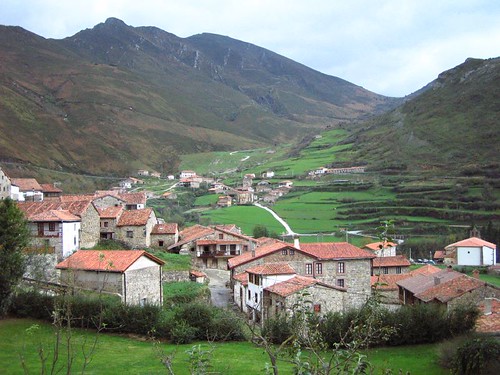
Located inside of Cantabria, Cabuérniga Valley Green is an impressive book that holds many secrets. At present, the passage of history has left this town a series of cores (Carmona, Fresneda, Renedo, Selores, Sopena, Teran, Valle and Viana), consisting of neighborhoods and villages where visitors, in addition to an exquisite gastronomy, you can complete your visit by observing elements of great architectural and environmental. Palaces, Mansions, rural housing, churches, chapels, shrines, trails and paths that offer, without doubt, one of the greatest opportunities to enjoy the traditional taste of rural Cantabria.
In this valley is a wealth of attractions: from small villages strewn with centuries-old stone houses and wood to impeccable cuisine, among which include mountain stew or venison stew, from huge oak and beech forests of great interest to wildlife such as deer hunting or feral pigs from walking routes by the National Reserve of Saja to incredible views as the Mirador de la Cardosa or Asomada del Rivero. All this in a completely natural and beautiful.

Moreover, its location, visitors are just one step both high mountain areas, with the possibility to practice sports like skiing in the High Campoo station, as the beaches of San Vicente de la Barquera and Comillas, in the Cantabrian Sea. Cabuérniga Valley is located in the central area of Cantabria, coinciding with the upper and middle courses of the River Saja. You can access the valley from the north on the A8 motorway to Cabezon de la Sal and taking the road there bound CA 180 Cabuérniga Valle, from the south, starting from Reinosa, taking Highway 183 CA Brañavieja direction and in the town of taking the road shin bound CA 280 Cabuérniga Valley, across the harbor Palombera.
Also accessible from the west, reaching the town and taking the road Puentenansa CA 182. Its location makes section is commercial or industrial areas of Cantabria, which allows you to enjoy nature at almost wild, it does not, it is perfectly connected, and that in just ten minutes we can access all services in the town of Cabezón de la sal, and from there, taking the Cantabrian motorway anywhere in Cantabria or the North of Spain.
How to visit?
– Ruente in this town is the upwelling of Ruente Fuentona karst. Nearby is a very low bridge, made of masonry, with eight arches lowered. Believed to be of medieval origin and was part of the road or causeway across the valley of Cabuérniga to Bárcena Mayor, where he spent the past to Reinosa and thence to Castile.
– Valley is the capital municipality of Cabuérniga (Cantabria, Spain). It is situated on a plain at the foot of two high altitude, 57 kilometers from Santander, 260 meters above sea level and its population was 176 inhabitants in 2004 (INE). The village is surrounded by meadows that form the valley floor.
The town of Valley has been declared a Site of Local Interest. The traditional houses of the village consists of buildings of traditional construction elements and materials typical of the architecture Cabuérniga Valley. Keep the traditional look of the sixteenth and eighteenth centuries. Two outstanding mansions: Casona de Rubin de Celis (XVII century) and Casona de Augusto González Linares.
– Renedo is a village in the municipality of Cabuérniga, Cantabria (Spain). It is situated in a plain, just 2.3 kilometers from the capital of the municipality, Valle, at 276 meters and a population of 120 inhabitants. It is crossed by the River Saja. In the past, Renedo Llendemozo Fresneda and also covered, including residential areas, in addition to selling houses Cotera. Fresneda town is now independent. Llendemozo or Llendemozo is an abandoned village. This was on the old road from the coast into Castile. Emperor Charles V once used it across the river Saja precisely by the people of Renedo.

Bon Voyage!
Leave a Reply
You must be logged in to post a comment.
Recent Comments